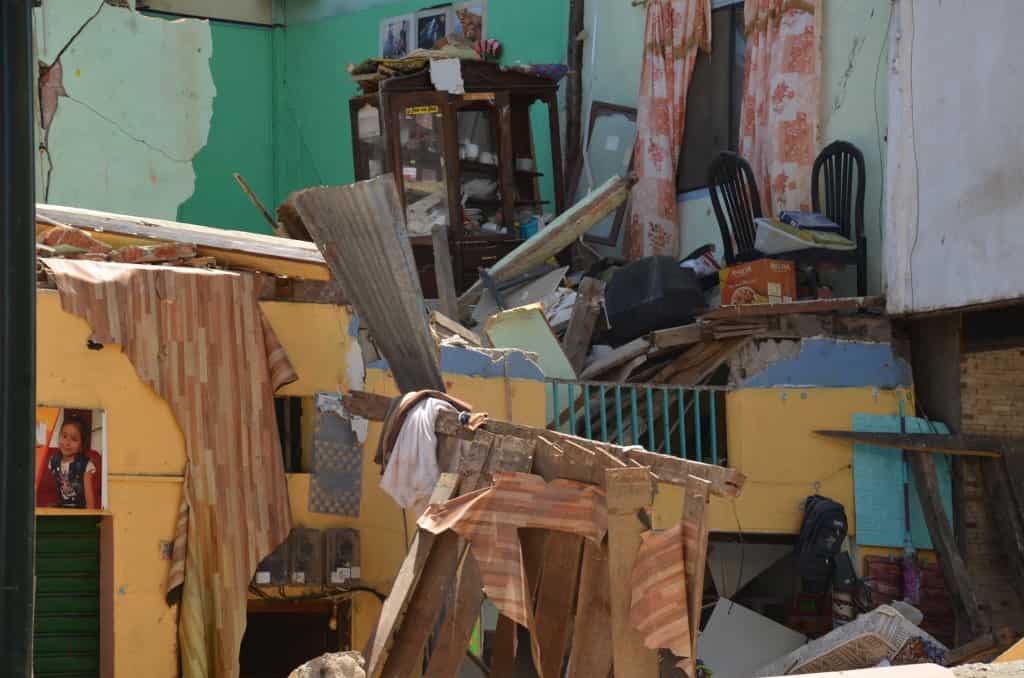A 6.5 magnitude earthquake that shook southern Ecuador and reached neighboring Peru left at least 14 dead, several injured and damaged buildings, according to an official balance.
The tremor was registered at 12H12 local time (17H12 GMT) and had its epicenter in the Ecuadorian municipality of Balao, about 140 km from the port of Guayaquil, and at a depth of 44 km, authorities reported.
Ecuador’s presidency reported 13 deaths, 11 in the province of El Oro and two in the province of Azuay. The previous death toll was 12.
In the Peruvian city of Tumbes, bordering Ecuador, a four-year-old girl died after being hit in the head by a brick, according to an official report.
“There where the pool of blood is, she was playing with my other niece and a block fell on her,” said David Alvarado, the child’s uncle.
The tremor was felt most strongly in southern Ecuador, where people took to the streets in panic. One of the most affected cities was Cuenca.
“People were running out, screaming in desperation, all the people got out of their cars (…) desperate, they were running, screaming, crying,” Magaly Escandón, a sewing saleswoman in that Andean city, told AFP.
The President of Ecuador reported that “there are injured people who are being treated promptly in hospitals”, but did not give figures. President Guillermo Lasso traveled to El Oro, where he visited injured people in a hospital, and then he will head to Azuay.
“I have just finished visiting the city of Machala (…) I have ratified the government’s support, the availability of resources,” Lasso said in a video posted on Twitter.
Call for calm
Collapsed buildings, cracked walls, vehicles crushed by debris. In the historic center of Cuenca there was also damage to some old houses.
The movement was strongly felt in other cities such as Quito, Manabí and Manta, according to users on social networks. Lasso made a “call for calm and to be informed through official channels”. Some roads near Cuenca were blocked by landslides after the earthquake.
According to the United States Geological Survey (USGS) the event had a magnitude of 6.8. In a statement, the Chilean government expressed its “solidarity” with the victims in Ecuador and assured that so far there are no reports of Chileans affected by the earthquake.
With less intensity, the tremor shook the northern and central coast of Peru. In Tumbes the earthquake left 46 people affected and 12 houses damaged, according to an official report.
Seismological authorities of that country reported an earthquake with a magnitude of 7.0 but hours later corrected the measurement to 6.7.
Two per year
Since noon, firefighters and police have been working to remove debris and rescue possible victims.
The memory of the devastating earthquake of 2016 gravitates in Ecuador. With a magnitude of 7.8 the quake left 673 dead and destroyed coastal towns, with losses close to 3.3 billion dollars.
“It is a relatively high magnitude for what we have in the country. In the area of the Gulf of Guayaquil we have been having more or less from 2017 onwards around two earthquakes with magnitude greater than 5.0 per year,” said Mario Ruiz, director of the Ecuadorian Geophysical Institute, in an interview with FM Mundo radio.
According to Ecuador’s Risk Management Secretariat, in Cuenca the façade of a house collapsed on a vehicle and left one person dead. “I’m nervous, I wouldn’t even want to wake up here,” Carmelita Salazar, owner of the affected house, told AFP.
Nearby, in the province of El Oro, three people were killed by the fall of a tower. A first aftershock of magnitude 4.8 was recorded in Balao, Ecuador.
“After 12H13, the largest aftershock occurred at 12H22. We have about eight aftershocks,” Ruiz said.
The Oceanographic and Antarctic Institute of the Ecuadorian Navy assured that the tremor “does not meet the necessary conditions to generate a tsunami” in the Pacific.

